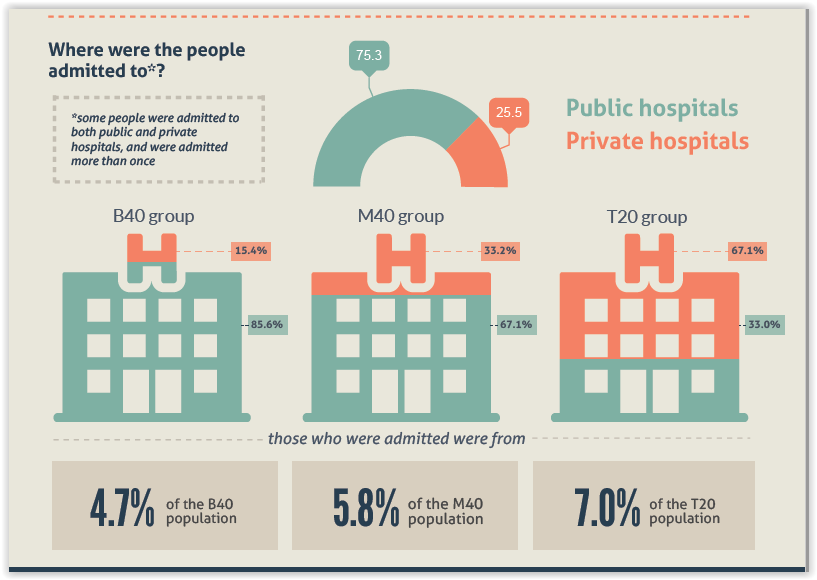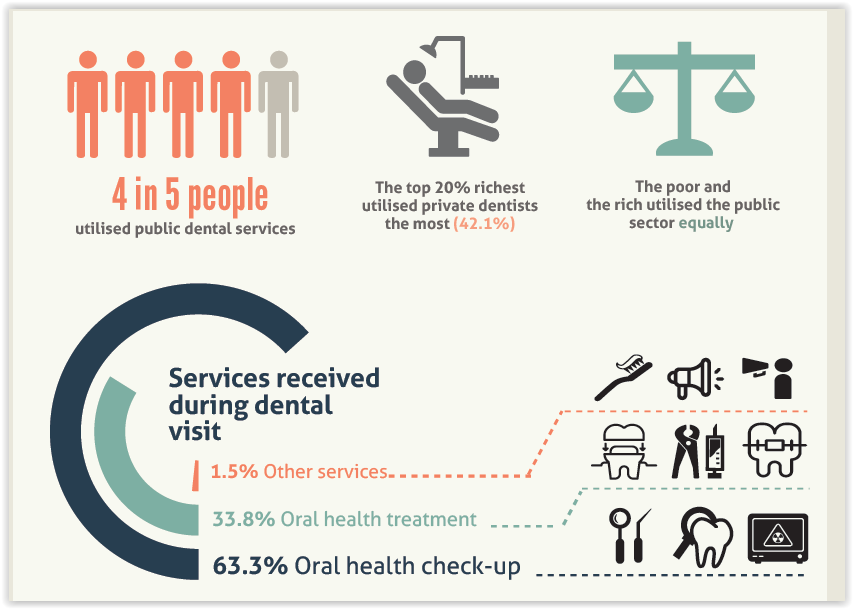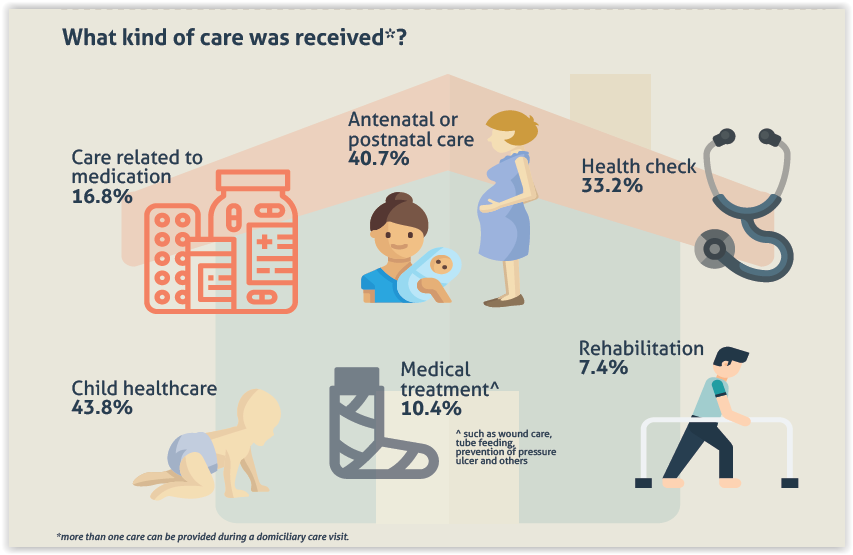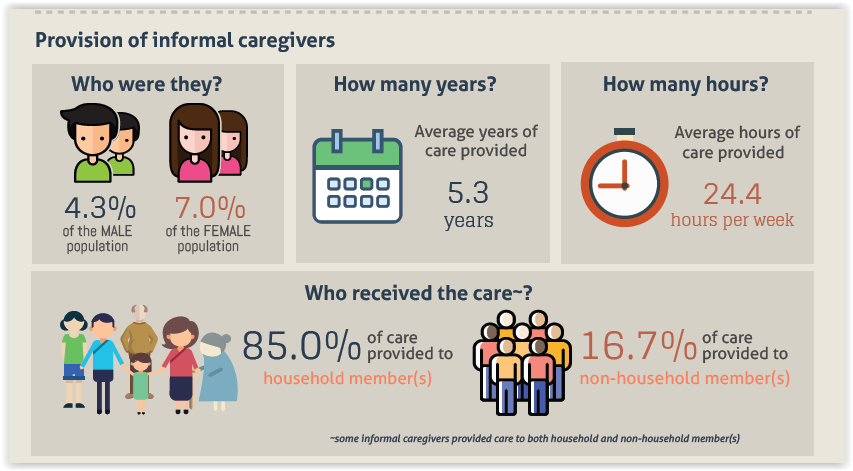KUALA LUMPUR, June 1 — Malaysians have been spending more on health care at about 5.1 per cent of their monthly household expenditure, according to the National Health and Morbidity Survey (NHMS) 2019.
This showed a steady increase from 4.6 per cent in 2015 and 3.6 per cent in 2011, according to the public health survey by the Institute for Public Health (IKU), a research institute under the National Institutes of Health by the Ministry of Health (MOH).
Reported financial sources for health services expenditure by households include 81.4 per cent from current income, 35.8 per cent from savings, 8.1 per cent insurance reimbursement, and about 11 per cent borrowed from family and friends.
The NHMS 2019 also reported only 22 per cent of the population are insured with personal health insurance (PHI), with 36 per cent of the uninsured population claiming that PHI is not necessary and a staggering 43 per cent of them unable to afford PHI.
As much as 45.5 per cent of the Malaysian population, including about 71 per cent of the poorest 20 per cent, do not have any means of supplementary financial coverage for medical treatment, other than the existing tax-funded health care coverage provided by the government.

Outpatient health care formed the largest component of out-of-pocket expenditure at 40.4 per cent in 2019, followed by self-care (purchase of dietary supplements at 24.5 per cent, community pharmacy visits (19.7 per cent), inpatient health care (7.7 per cent), and oral health care (3.3 per cent).
Advocates say the Malaysian government does not spend enough on health, as previous administrations have toyed with the idea of implementing social health insurance to expand health financing beyond revenue from the general taxation base.
Public health care is vastly subsidised, with the RM1 and RM5 fees for outpatient and specialist fees at MOH facilities respectively not changed for nearly four decades.
Higher Outpatient Care Utilisation In Public Facilities

More Malaysians sought outpatient care in public facilities compared to previous years, according to the NHMS 2019, at 64.6 per cent last year compared to 36.3 per cent in private facilities. Some people patronised both public and private facilities, and went more than once.
According to the NHMS 2019, about 64.3 per cent of Malaysians utilised outpatient services in the public sector in 2019, marking an increase of some 4.3 percentage points from 60 per cent in 2015, and 48.7 per cent in 2011.
(The usage of outpatient services in the public sector was reported slightly differently in two different NHMS 2019 documents: 64.3 per cent in the factsheet and 64.6 per cent in the booklet).
The NHMS 2019 estimated one in every twelve people in Malaysia, or 8.1 per cent, used outpatient health care services in the last two weeks prior to the interview for the survey.
Of those who utilised outpatient health care, 8.8 per cent were from the rural population, which were found to be a whole percentage point more than those who live in cities at 7.8 per cent utilisation.

Of note, 40 per cent of those who used outpatient health services consist of the elderly population defined as individuals who are 60 years of age and older. Malaysians sought outpatient health care primarily for health problems at 74.1 per cent, follow-up visits (37.1 per cent), medical check-ups (26.3 per cent), and other types of care (3.1 per cent).
NHMS 2019 also reported that 47.1 per cent of households repeatedly visited the same clinic, with more than half of those in the public sector, while 24.1 per cent of households frequented the same doctor.
The bottom 40 per cent (B40) population comprised 8.1 per cent of the total outpatient health care usage, with significantly more individuals from this income group going to the public sector at 71.2 per cent, compared to the middle 40 per cent (M40) group at 53.4 per cent and the top 20 per cent (T20) group at 37.5 per cent.
It is unknown why more Malaysians have been seeking outpatient health services in the public sector, and if this indicates a switch from private to public clinics. The full NHMS 2019 report was not made publicly available.
Plateau Of Inpatient Care Utilisation At Public Facilities

The NHMS 2019 reported a plateau in the utilisation of inpatient health care in the public sector at 75.5 per cent in 2019, from 76.8 per cent in 2015 and 74.1 per cent in 2011. Overall inpatient health services usage was 5.2 per cent in the last 12 months prior to the interview for the 2019 survey.
About a quarter of Malaysians, or 25.5 per cent, were admitted to private hospitals in 2019, compared to three-quarters at public hospitals, or 75.3 per cent. Some people were admitted to both public and private hospitals, and were admitted more than once.
(The usage of inpatient services in the public sector was reported slightly differently in two different NHMS 2019 documents: 75.5 per cent in the factsheet and 75.3 per cent in the booklet).
Five per cent of the Malaysian population were admitted to hospital over a twelve-month period, according to the NHMS 2019, with about three quarters of those admissions allocated to public hospitals at 75.3 per cent.
Utilisation of public hospitals was largely by B40 and M40 groups at 85.6 per cent and 67.1 per cent respectively. Most patients from the T20 group were admitted to private hospitals at 67.1 per cent.
Women of reproductive age from 20 to 49 years comprised 37.2 per cent of hospital admissions, while people aged 60 and above made 16.6 per cent of hospital admissions.
15% Have Never Visited A Dentist

It was reported that only a quarter of the Malaysian population visited a dentist in the past year, where four in five people utilised public dental services.
The T20 income group reportedly utilised private dental services the most at 42.1 per cent, while the public sector was utilised equally between the poor and the rich.
Half of the population last visited their dentist more than two years ago, and as many as 15 per cent of the population had never visited a dentist in their lifetime.
Home Care Providers Mostly From Government

One in 50 people in Malaysia reportedly received health care in their homes over the past 12 months prior to their interview, including consultation services, medical check-ups, and treatment.
The majority of care received were child health care at 43.8 per cent and antenatal or postnatal care at 40.7 per cent. Other health care services include care related to medication, medical treatment, health checks, and rehabilitation services.
Home care providers were mainly from the government sector, which covers 88.2 per cent of the total home care service. Limited involvement from the private sector and non-government organisations (NGOs) were reported at less than four per cent.
Most Informal Caregivers Are Female

More than 5 per cent of the population aged 18 and above provided informal care, defined as personal care, health care or other assistance to others who are unable to care for themselves, in the past 12 months prior to the interview.
Majority of caregivers are female, and the average years of care provided was 5.3 years, with an average of 24.4 hours per week. The NHMS 2019 reported that 85 per cent of care was provided to household members.
As many as 16 per cent of informal caregivers reported that their health, either physical or mental or both, were affected by their caring role.
The NHMS 2019 report pointed out that the health and well-being of caregivers should not be overlooked and monitoring of their health is equally as important as their care recipients’ health.








